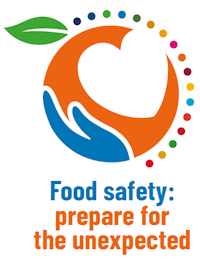Eurachem Blog
Using non-targeted methods to assess food safety

Food safety is a top priority worldwide, but assessing it can be complex. The deterioration of food safety can occur unintentionally or intentionally. New food processes, packaging materials, and products can introduce emerging contaminants or hazards. Intentional adulteration of food for financial gain degrades its quality and may impact its safety. As scientific knowledge expands, new food hazards are regulated, and safety limits are adjusted. Additionally, advanced analytical methods are employed to detect emerging hazards in food.
For many years, analysis in the field of food safety relied on a targeted approach, requiring prior knowledge of substances or their metabolites. In the past decade, new innovative methodologies using a non-targeted approach have emerged. These strategies, based on high-resolution analytical technologies, do not always require prior knowledge of analytes. Their primary benefit is the ability to identify potential risks and unknown contaminants. They can also help to detect food fraud in a holistic and comprehensive manner, covering a wide variety of endogenous and exogenous substances.
Despite extensive research in the scientific community, non-targeted analytical techniques have not yet been incorporated into official control measures. The lack of guidelines for evaluating the fitness for purpose of non-targeted methods hinders their adoption in food safety decision-making. Eurachem, through its Working Groups, recognized this gap in guidance. Consequently, the Method Validation Working Group (MVWG) established a non-targeted method task group to develop guidelines for validating non-targeted methods. To achieve this, the MVWG members formed a joint task group with AOAC-Europe, including scientists, regulators, and inspectors from various fields across Europe where non-targeted methodologies are applied. The joint group has already organized two webinars titled "Trends and Challenges for Non-Targeted Methods," with the presentations available on the Eurachem website.
Resources
- Webinar presentations: Trends & challenges for Non-Targeted Methods. Part 1. Quo Vadis? What, How and Who?
- Webinar presentations: Trends & challenges for Non-Targeted Methods. Part 2: NTMs – qualitative or quantitative?
- Workshop presentations: Eurachem workshop - Validation of targeted and non-targeted methods of analysis
- WHO video: World Food Safety Day 2024
- WHO video: World Food Safety Day 2024 - Food safety: prepare for the unexpected

- Details
- Published: Friday, 07 June 2024 21:38

